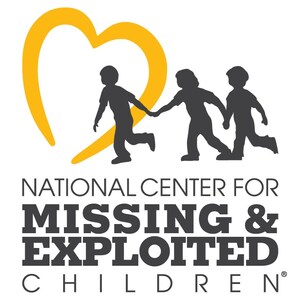Diverse Global Hotlines Share Mission, Challenges In Combating Child Sexual Predators Online
New NCMEC study analyzes challenges reported by 52 hotlines around the world and examines technology's role in helping to combat child sexual abuse material
ALEXANDRIA, Va., Dec. 2, 2015 /PRNewswire-USNewswire/ -- The National Center for Missing & Exploited Children today released results of a year-long study examining global challenges to combating child sexual abuse material online. This study, made possible through a research grant from Google.org, the philanthropic arm of Google, surveyed 52 diverse hotlines around the world to better understand their shared challenges, particularly in regard to technological pain points. The findings revealed that despite differences among these hotlines, which vary as greatly as the countries they represent, they share many of the same challenges.
NCMEC operates the CyberTipline, the nation's central mechanism for reporting suspected online child sexual exploitation. Since it was established in 1998, the CyberTipline, the largest of its kind in the world, has received more than 7.2 million reports, which are then sent to law enforcement for possible investigation. The number of reports has grown exponentially every year.
"The online sexual exploitation of children is not only a significant challenge here in the United States, it's a global problem, and it's vital for countries to collaborate," said Michelle Collins DeLaune, NCMEC's chief operating officer. "The results of this study offer insight into the key challenges hotlines face, which are important to identify and understand. There are many areas that can benefit from technological improvements, such as increased automation and expanded data analytics."
The study recommends establishing a technology working group to develop technological solutions to facilitate hotlines and proactively monitor shifting trends in child sexual abuse material.
Other key findings include:
- Most hotlines identify as non-profit organizations, funded primarily by government or foundation grants.
- Hotlines vary greatly, particularly in their numbers of report-processing staff and reports received per year. While staff sizes vary from only one or two analysts to as many as 12 or 20, the number of reports received ranges from as few as 68 to more than 500,000 per year.
- Child sexual abuse material comprises the majority of reports for many hotlines; 15 percent solely receive these reports while 85 percent receive a variety of additional report types.
- Offenders' use of technology to exploit children was listed as a significant problem; 80 percent saw an increase in the use of social networking, 85 percent reported offenders' various tactics to increase anonymity and 40 percent reported difficulty with content hosted in areas such as the dark web
- Technological support and infrastructure are two of the most important factors in helping a hotline run smoothly; however, report-processing analysts commonly play dual roles as IT support due to high demands on hotlines' dedicated IT staff and engineers
- Hotlines most commonly shared a need for increased automation and integration among their report-processing programs to increase efficiency, reduce the duplication of efforts and alleviate much of the mentally taxing work for analysts.
- Hotlines' ability to develop tailored in-house programs decreases the need for various off-the-shelf programs and helps address the lack of automation and integration.
About the National Center for Missing & Exploited Children
The National Center for Missing & Exploited Children is the leading 501(c)(3) nonprofit organization working with law enforcement, families and the professionals who serve them on issues relating to missing and sexually exploited children. Authorized by Congress to serve as the nation's clearinghouse on these issues, NCMEC operates a hotline, 1-800-THE-LOST® (1-800-843-5678), and has assisted law enforcement in the recovery of more than 215,500 children. NCMEC also operates the CyberTipline, a national mechanism for reporting child pornography, child sex trafficking and other forms of child sexual exploitation. Since it was created in 1998, more than 7.2 million reports of suspected child sexual exploitation have been received, and more than 156 million suspected child pornography images have been reviewed. NCMEC works in partnership with the U.S. Department of Justice's Office of Juvenile Justice and Delinquency Prevention. To learn more about NCMEC, visit www.missingkids.org. Follow NCMEC on Twitter (@MissingKids) and like NCMEC on Facebook (Facebook.com/MissingKids).
SOURCE The National Center for Missing & Exploited Children
Related Links
WANT YOUR COMPANY'S NEWS FEATURED ON PRNEWSWIRE.COM?
Newsrooms &
Influencers
Digital Media
Outlets
Journalists
Opted In





Share this article